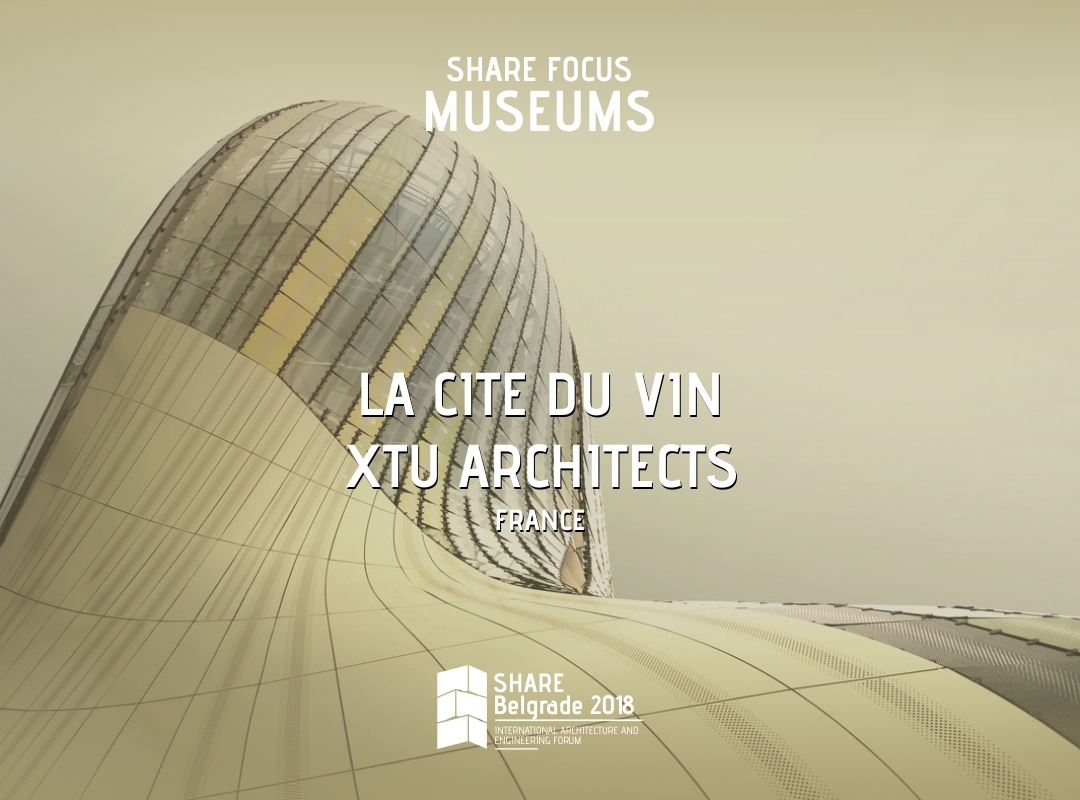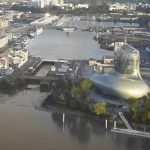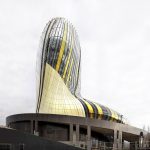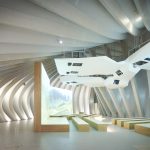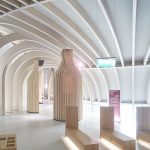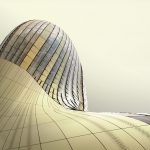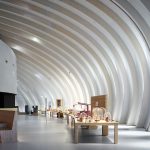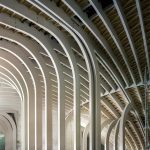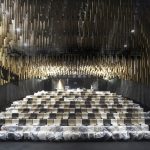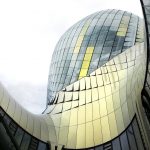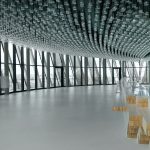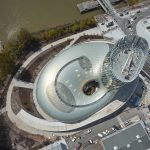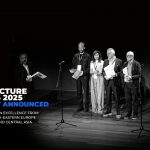SHARE FOCUS: MUSEUMS | La Cite du Vin by XTU Architects (FR)
Projects with strong architectural statements brought by one of the most important architecture and engineering event in Central and Eastern Europe
Museums have an increasing role in our cities and history has proven that a museum is much more than an inventory of cultural artefacts. Apart from their representation values, they have become institutions able to revive and enrich not only cultural life of cities but also their economic and political status. Architects had their say on how museums look like, what they inspire and stand for and how people interact with art and history. From the black box to architecture that becomes itself a piece of art, there is a great conceptual palette that speaks a lot about how society is shaped and about people’s views and values.
Share Forum aims to give an overview of the most awarded architecture worldwide and to celebrate architectural excellency in the Central and Eastern European countries. We believe that this means tackling with the ideas and concepts behind the projects featured at our events and regard them as the main instruments to understand where we are today and where we are heading to. As such, SHARE Belgrade 2018 will bring to its audience outstanding examples of museum architecture, buildings featured in the most respectable competitions and publications of contemporary architecture.
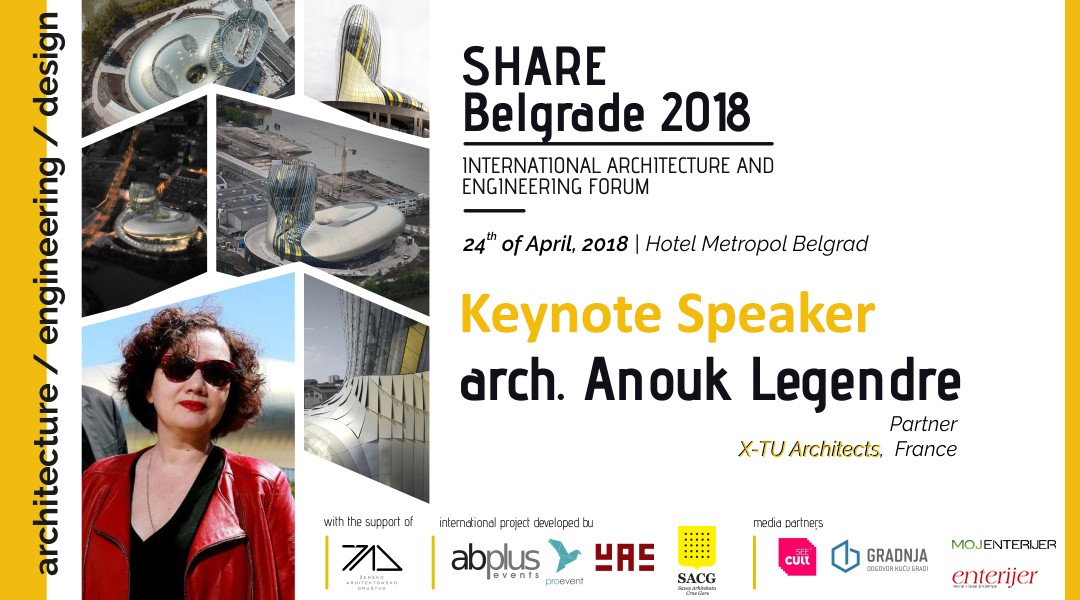
Arch. Anouk Legendre founder of XTU Architects (FR) to present la Cite du Vin at SHARE Belgrade 2018
We are in a period of rapid changes and society must change itself also. We must think of other ways to build our cities which have to begin to embody higher moral standards. The city must start producing a part of what we may need tomorrow, and for that we strongly believe in what biology and living matter has to offer to us. Biology will replace tomorrow what chemistry and industry brought for our civilization. – excerpt from the interview with Anouk Legendre at SHARE Bucharest 2017.
Arch. Anouk Legendre, partner at X-TU Architects, France, is one of the outstanding architects who joined us in our quest for excellence, sharing with our community the excitement and freshness of the French studio XTU. We are proud to welcome her as keynote speaker at SHARE Belgrade 2018. At the first Serbian edition of SHARE Forum, she will talk about La Cité du Vin – their nominated project at European Architecture Mies van der Rohe Award. The event will take place on April 24 at Hotel Metropol in Belgrade and the tickets can be booked here.
From the architects:
The latest project XTU built is the spectacular Wine Museum in Bordeaux, opened in June 2016.
„This building does not resemble any recognizable shape because it is an evocation of the soul of wine between the river and the city.” – said the architects.
A strong architectural statement, La Cité du Vin stands out with its bold curves and shape. This iconic building with a golden frame that hosts a Cité within the city is a living space with experiences to discover. The aim of the building’s architecture was genuinely to create a link between La Cité du Vin and the spaces surrounding it through perpetual movement.
Anouk Legendre and Nicolas Desmazières, the architects from XTU, designed a space shaped by symbols of identity: gnarled vine stock, wine swirling in a glass, eddies on the Garonne.
XTU Architects created every detail of the architecture in such a way to evoke wine’s soul and liquid nature: ”seamless roundness, intangible and sensual”.
This roundness transcribed in the building’s exterior can also be felt in its indoor spaces, materials and scale. La Cité du Vin dazzles with a golden shimmer reminiscent of the light stone found on Bordeaux facades. Its own facade is made up of silk-screen printed glass panels and perforated, iridescent, lacquered aluminium panels.
Changing with the sunshine or the time of day, the building dialogues with the river through its reflections: there are very close parallels with the wine’s constantly changing appearance. This very distinctive shape causes you to look at the river running past from a different perspective.
The building’s two entrances on either side create an impression of movement and flow between inside and outside. One entrance faces the city and the other faces the river. Higher up, the viewing tower enables visitors to discover the city lights and the surrounding land, like a watchtower.
The wine, the river, the flow of visitors are the main elements that characterized the tour. You pass through the building like a river, with visitors becoming voyagers flowing around the central staircase, perpetuating this impression of movement.
This means that visitors are constantly moving as they experience a virtuous circle of discovery. Each person discovers a new world in a fluid, rotating motion leading to an unusual, limitless destination, like a journey through the meanderings of a cultural landscape which feeds the imagination. The architecture is a voyage in itself, the building program was developed in line with the scenography.
Downstairs is therefore a dark world, like a cellar, with the roots of the vines. The ground floor is raw as an immersion stage diving into the project, a crossing point. The mirror reflections are disorienting and encourage visitors to move upwards towards the light. They feel this light on the courtyard then follow it through the structure until it finally explodes. There is no fixed route to follow, just worlds to discover.
The aim of the experience is genuinely to question rather than let alone. Sometimes the architecture steps back, in other places it reappears. The wooded arch of the permanent tour, the strongest area of La Cité du Vin, is like a varied sky. The sky is everything in winemaking, determining the harvest. This wooden sky rises, undulates and tightens, and everything is about movement.
The wooden structure is reminiscent of a timber frame, of boats, of wine on its travels. It is an immersive break from reality, a world of roundness, fluidity and elevation approximating the wine experience. Visitors are in a discovery mind-set initiated by the architecture, which creates the right conditions for them to discover and complete this immersive, initiatory journey.
“X” stands for the unknown mathematical variable and “TU” for the suffix in situ – references to the geography and the landscape of work done by Nicolas Desmazieres and Anouk Legendre, the architects who founded XTU in 2000. Among its many projects, XTU designed the Jeongok Prehistory Museum in South Korea and has worked on the “Maison des Civilisations” in La Reunion, the first positive energy museum in the Indian Ocean.
Standing up for the beliefs that architecture should predict the future and that the biotechnological transition will be the third industrial revolution, XTU Architects are truly investing in urban agriculture and experimental research, which lies between the life sciences, ecology, architecture and urban development. Moreover, the office XTU is delivering the world the first integrated bio façade on a building.
Their architectural position is focused on the expression of an architecture carved in the shape of volumes echoing the urban context and landscape. The form originates from the context, knowingly pictured in a minimalist, refined and futuristic way, inspired by abstract sculptors.
Among the awards of the French architecture office we mention:
• nominee «Mies van der Rohe prize» 2016 for the project Cité du vin
• winner «Réinventer Paris» competition, Paris district 13 site for the In Vivo project
• Architecture and Landscape Gold Medal for the France Pavilion, Expo Milano 2015
• winner 2014 Paris Shop & Design’ for the Patrick Roger shop
• winner Academy Korean Architects Prize 2013 for the Prehistory Museum in Jeongok
• selected AFEX Prize 2012 for the Prehistory Museum in Jeongok
• winner «Low Carbon Prize» 2011 for the St-Ouen building
• nominee «Mies Van Der Rohe prize» 2010 for Duployé Housing
• nominee «European Prize Ecola» 2010 for Duployé Housing
• nominee «Mies Van Der Rohe prize» 2009 for the Police Station
• nominee «Office European Award» AIT Prize 2008 for the Police Station
• nominee «New European Architecture» 2007 for the Police Station
• winner «Architecture of Bordeaux» 2003 for Les Menuts High School
• winner «Grand Audience Award» 2003 for the Technological center / Valenciennes
• nominee Équerre d’argent 2001 for Les Menuts High School in Bordeaux
PHOTO GALLERY
For registration and other details about the event (click)
The SHARE FORUM brings together each year hundreds of practicing architects and contractors from Europe, Asia and the United States of America, becoming one of the most important networking platforms for the construction-related fields in Central and Eastern Europe. Its annual editions are a constant relevant presence in Warsaw and Krakow (Poland), Budapest (Hungary), Bucharest (Romania), Sofia (Bulgaria), and this year we join our community in Belgrade (Serbia), Athens (Greece) and Skopje (Macedonia). ABplus Events, as Professional Trade Events and Congress Organizer, is the creator of the concept of national network of construction trade shows. Our experience in the Central and Eastern European market positions our events as one of the most effective international forums in the region, a source of constantly updated information, supporting the continuous training of specialists and the promotion of young talents. For 20 years we have been in pursuit of excellence in the fields of architecture and construction, through these international events organized for architects and contractors, in cooperation with our partners – the national chambers of architects, architecture and construction institutions and associations.
For Customer service, Bookings and Sponsorship opportunities please contact:
E: share@abplusevents.com
For more details about SHARE Belgrade 2018 and our events follow us on:
Facebook: https://www.facebook.com/abplus/
Twitter: https://twitter.com/ArchTradeEvents
LinkedIn: https://www.linkedin.com/company/abplus-events/
Or visit our website: http://share-architects.com/
